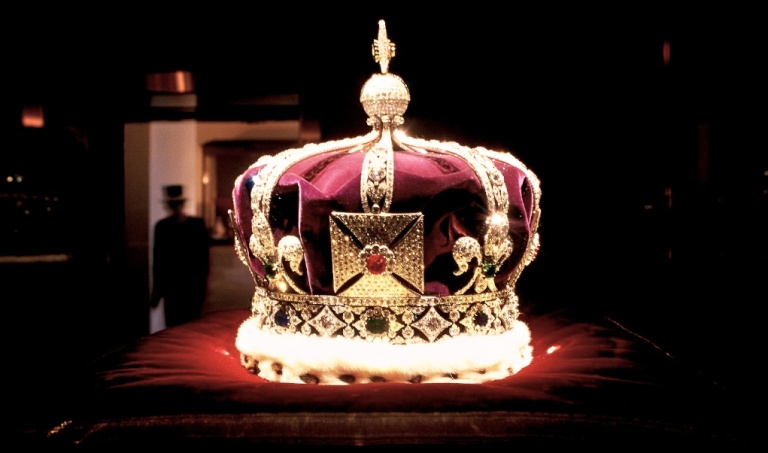A Brief History Of The Kohinoor Diamond, And What All The Fuss Is About
NEW DELHI: A few days ago, the Kohinoor diamond was in the news, as the BJP government went on the record to say that the precious gem was not stolen from India, but legitimately gifted to the British. The statement was made when a matter came up before the Supreme Court of India, as the All India Human Rights and Social Justice Front filed a petition alleging that the Modi government was not doing enough to bring back the diamond.
In a major departure from India’s position on the matter of the Kohinoor thus far, Solicitor General Ranjit Kumar, appearing for the government, told the bench headed by Chief Justice of India (CJI) T S Thakur that the culture ministry has taken a stand that "India should not claim Kohinoor as it was neither stolen nor forcibly taken away. It was handed over by Maharaja Ranjit Singh to the East India company."
The statement made headlines, nationally and internationally, with the BBC joining the party with a bold headline that states “India says it will not claim Kohinoor diamond from UK.”
The internet was abuzz, with ‘Kohinoor’ trending on Twitter. People, expectedly, were angry about the volte face.
Others, such as Caravan’s political editor Hartosh Singh Bal, pointed out the historical inaccuracies in the government’s statement:
In addition to the historical inaccuracy regarding dates, there is a problem in the statement that the diamond was a “gift.” Let me explain by giving you a brief history of the Kohinoor diamond…
The Koh-i-Noor (Persian for Mountain of Light; also spelled Koh-i-Nûr and Kooh-è Noor) is a large, colourless diamond that was found near Guntur in Andhra Pradesh, India, possibly in the 13th century. It weighed 793 carats (158.6 g) uncut and was first owned by the Kakatiya dynasty. The stone changed hands several times between various feuding factions in South Asia over the next few hundred years, before ending up in the possession of Queen Victoria after the British conquest of the Punjab in 1849.
Now, here is the crucial part. It ended up in the possession of Queen Victoria after the British CONQUEST of the Punjab. The details provide some insight into how the Kohinoor was cleverly granted to Queen Victoria in 1849. Maharaja Ranjit Singh had willed the diamond to the Hindu temple of Jagannath in Puri, in modern-day Odisha. After his death in 1839, the East India Company did not execute his will and instead, about ten years later on March 29 1849 following the conclusion of the Second Anglo-Sikh War, the Kingdom of Punjab was formally annexed to British India, and the Last Treaty of Lahore was signed, officially ceding the Kohinoor to Queen Victoria and the Maharaja's other assets to the company.
Does that qualify as a gift? And even if the British were to claim it as such, does it not go against the interests of former colonies -- where, by speaking the same language as our colonisers, we end up defending and even legitimising the plunder, subjugation and deceitful transfer of indigenous cultural artifacts from the countries in which they originated?
Historian Syed Ali Nadeem Rezvi, deputy co-ordinator of Centre of Advance Study in History, Aligarh Muslim University (AMU), put this in perspective. The Professor told DNA, “this government, since its formation, has been playing games with and in the name of history. How can a thing "wrested" from a subservient colonised state be treated as gift? Unless, of course, the present party in power does not consider British Imperialism in India and its colonisation as something bad, but takes it as beneficial. Gifts are exchanged between two independent entities; but when one is a master and the other a slave, things taken from the slave are not gifts."
In fact, the problems with treating the Kohinoor as a “gift” were evident in how Lord Dalhousie reacted to the British claiming it all those years ago. The manner of his aiding in the transfer of the diamond was criticized even by some of his contemporaries in Britain. Although some thought it should have been presented as a gift to Queen Victoria by the East India Company, it is clear that Dalhousie strongly believed the stone was a spoil of war, and treated it accordingly, ensuring that it was presented to her by Maharaja Duleep Singh, the youngest son of Ranjit Singh.
Writing to his friend Sir George Cooper in August 1849, he stated:
“The Court [of the East India Company] you say, are ruffled up by my having caused the Maharajah to cede to the Queen the Koh-i-noor; while the Daily News and my Lord Ellenborough (Governor-General of India, 1841–44) are indignant because I did not confiscate everything to Her Majesty. The motive was simply this: that it was more for the honour of the Queen that the Koh-i-noor should be surrendered directly from the hand of the conquered prince into the hands of the sovereign who was his conqueror, than it should be presented to her as a gift—which is always a favour—by any joint-stock company among her subjects.”
Duleep Singh, aged 13, travelled to the United Kingdom to present the jewel. The presentation of the Koh-i-Noor and the Timur ruby to the queen was the latest in a long history of transfers of the stones as coveted spoils of war.
Given this history, the government of India -- ever since it gained independence in 1947 -- has demanded the return of the Kohinoor, maintaining that it was taken as a spoil of war and NOT presented as a gift.
For the first time in the history of independent India, the government has backtracked on that legitimate claim… and by doing so, ended up speaking in the language of our colonisers.





